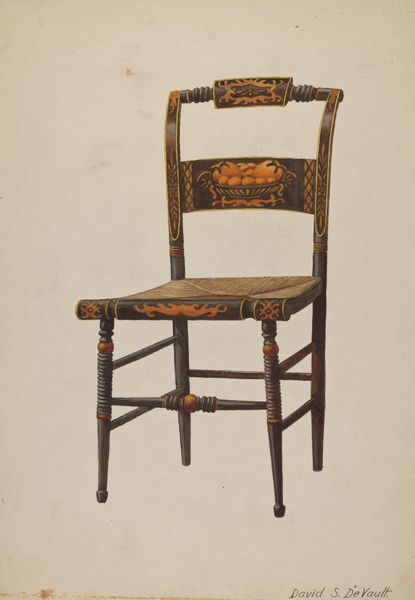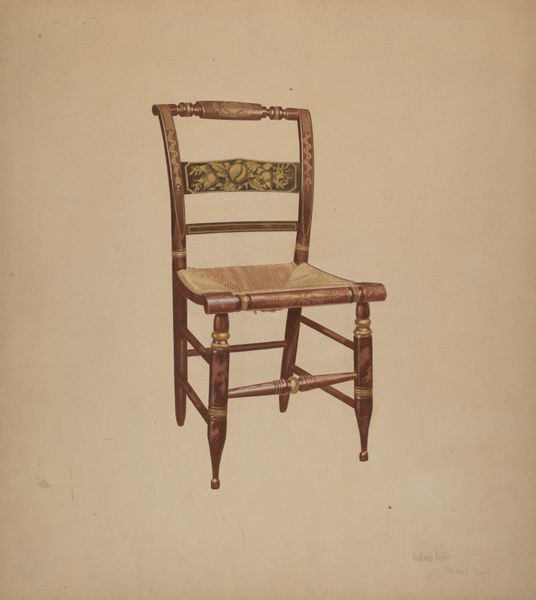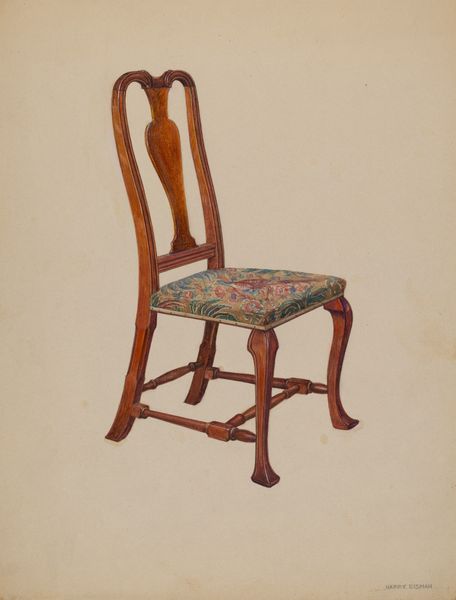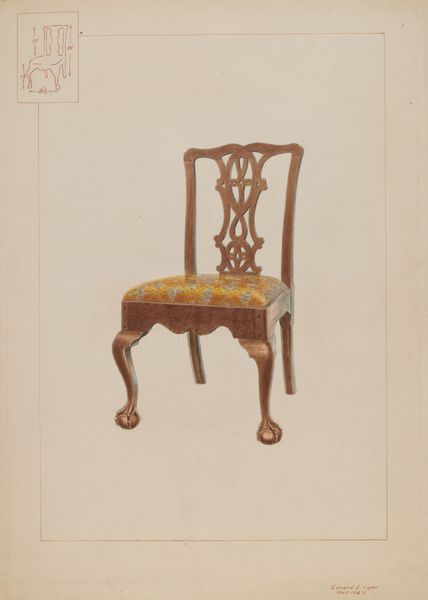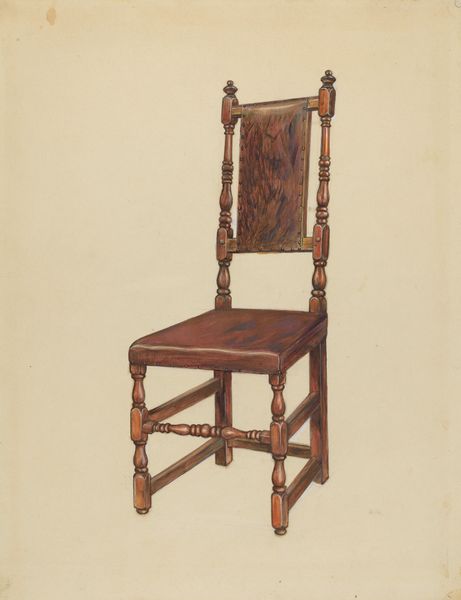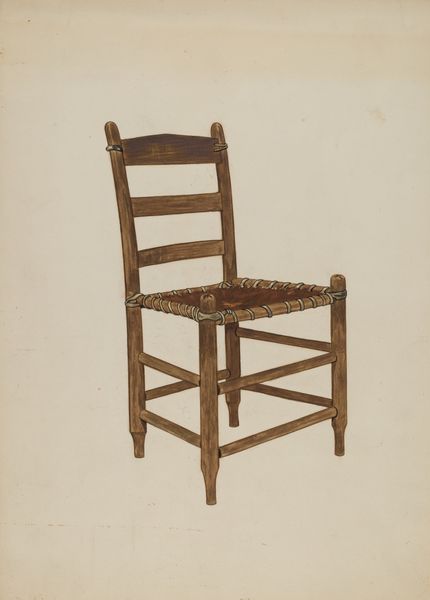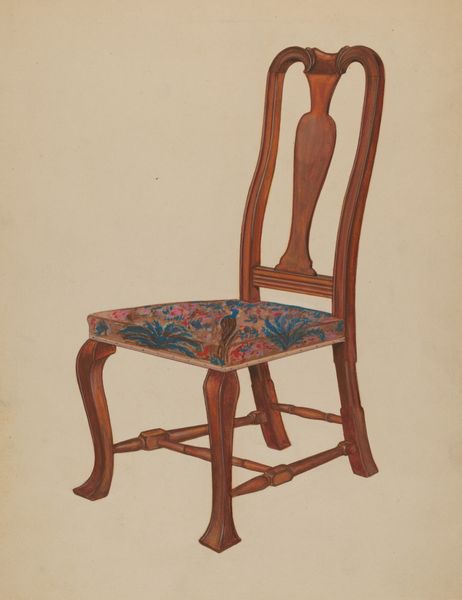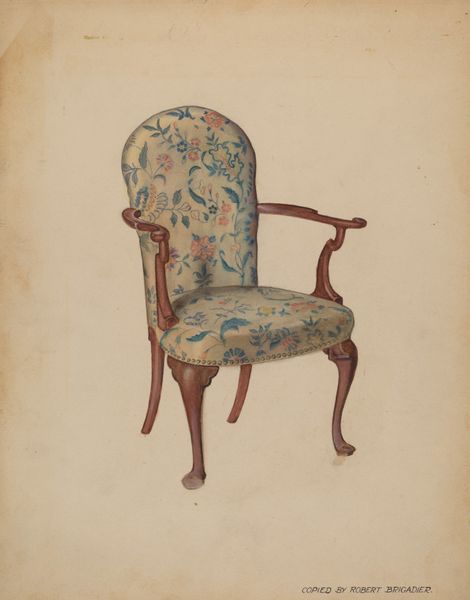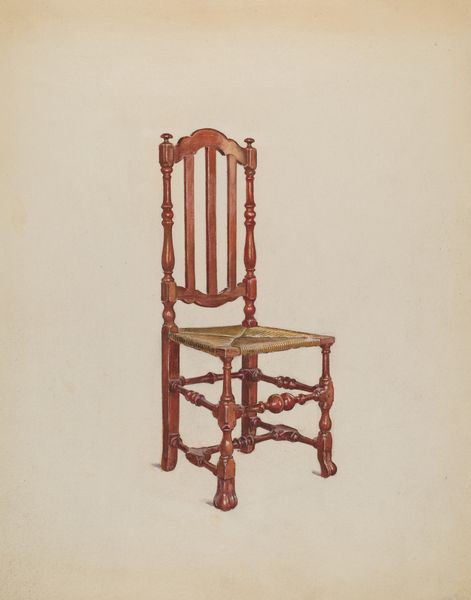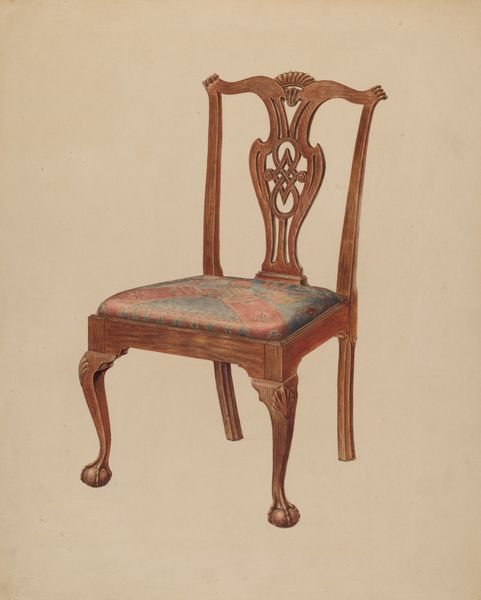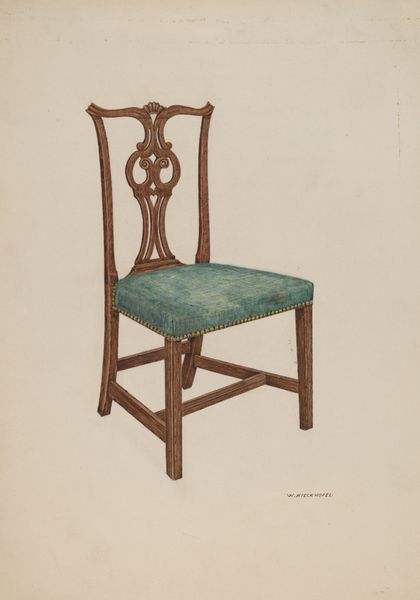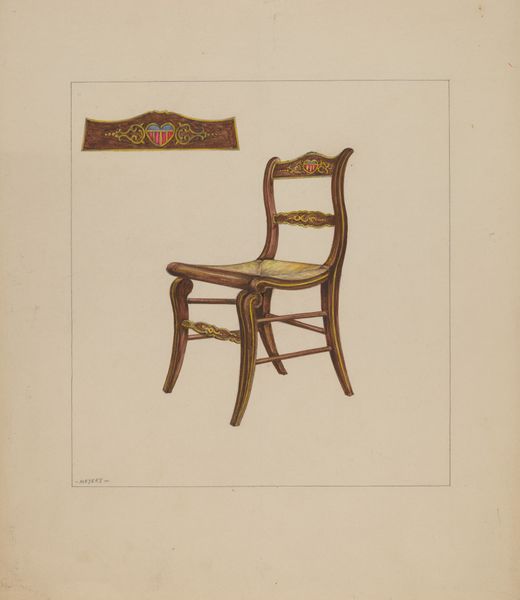
drawing, coloured-pencil, pencil
#
drawing
#
coloured-pencil
#
coloured pencil
#
pencil
#
academic-art
#
watercolor
Dimensions: overall: 28.4 x 23.9 cm (11 3/16 x 9 7/16 in.) Original IAD Object: none given
Copyright: National Gallery of Art: CC0 1.0
Curator: I am struck by the contrast between the simplicity of the form and the richness of the fabric in this artwork. Editor: I'm immediately drawn to the floral patterning, there's something comforting in these colors, although a bit muted in tone. It evokes a certain nostalgia. Curator: Indeed, this is "American Chair with Turkey Work" from 1936 by Victor F. Muollo. It appears to be a drawing, likely in pencil and colored pencil. Editor: Turkey work! That term suggests exoticism and luxury—though I'm guessing that this piece references historical styles more than actual imported textiles. What can you tell me about "turkey work"? Curator: "Turkey work" typically refers to a type of pile rug or upholstery imitating Turkish carpets that were popular in Europe, particularly during the 16th and 17th centuries. They represented luxury and a connection to the Ottoman Empire. Given that this image was created in 1936 it probably illustrates the way that elite designs gradually find their way into the popular designs and cultural memory of different social groups. Editor: It is fascinating how historical styles are reinterpreted over time, carrying cultural memory. Even this color palette of indigo, red, and muted green calls forth a deep feeling. There's something familiar about the shapes of the blooms, aren’t there any obvious meanings here? Curator: The presence of specific symbols within the floral design isn’t explicit here. What truly marks the value is the visual style with references to luxurious tastes through the choice of subject. It brings a sense of the past to contemporary audiences. Editor: I agree. The real symbolism might reside in the cultural cachet that an item evokes over the course of time! It's about class and tradition. The execution may be simple, even humble, yet the symbolic references within connect the audiences through space and time. Curator: Yes, the medium further influences my analysis; it is not a chair from that period, but rather a later drawing of that design which emphasizes an attempt to engage with ideas about "the past." This object embodies how those traditions became accessible or relatable, and were reshaped, democratized. Editor: Considering how powerful simple colors, composition, and reference can be, my impression is that such a modest creation can evoke a deep well of time, connecting different styles and memories through just one item. Curator: Absolutely; examining a drawing from the 1930s gives us insights into social relationships with domestic art at that specific time in American cultural history.
Comments
No comments
Be the first to comment and join the conversation on the ultimate creative platform.
